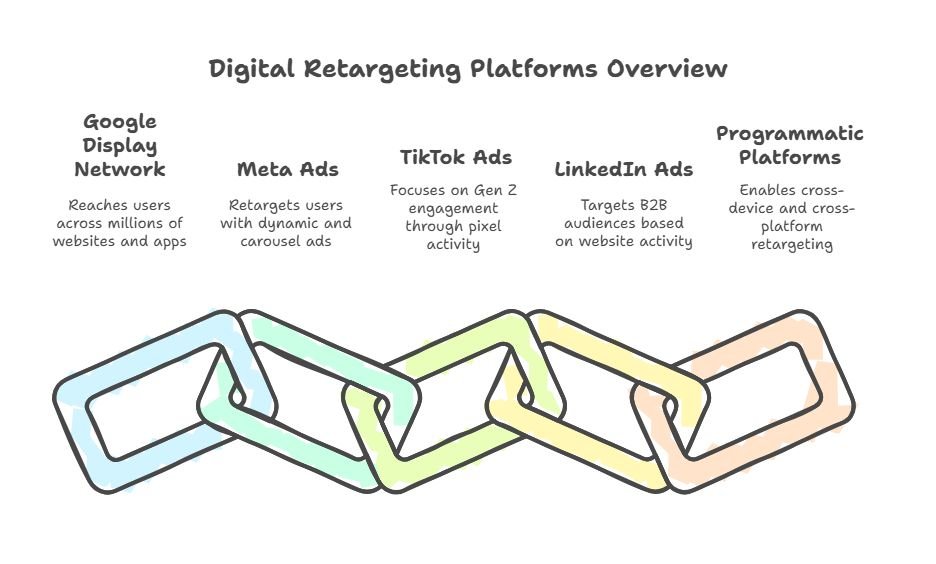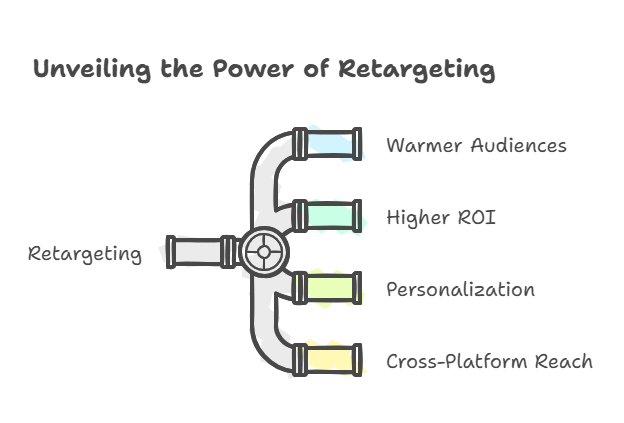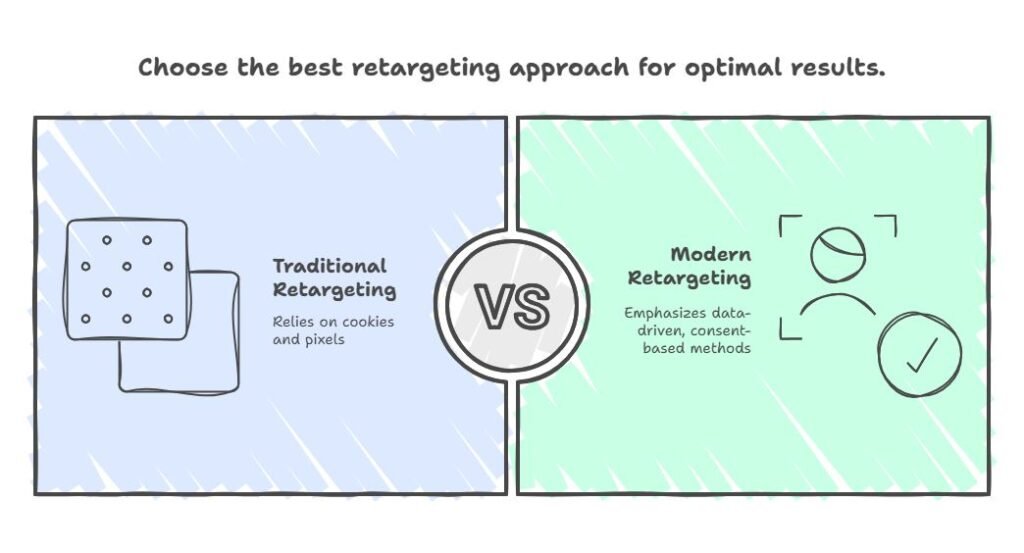In the vast world of digital marketing, one powerful strategy stands out for its precision in tracking user behavior across the web: retargeting (also known as remarketing).
This strategy allows marketers to follow users after they leave a website and re-engage them with personalized ads across different platforms.
But how does it work? Why is it so effective? And how can you implement it in your strategy stack?
Let’s break it down.
What Is Retargeting in Digital Marketing?
Retargeting is a digital marketing strategy that uses cookies, pixels, or user identifiers to track visitors after they leave your website. These users then see your ads on other websites, apps, or social platforms, they browse them later.
Instead of targeting new users, retargeting focuses on users who have already shown interest, increasing the chances of conversions.
How Retargeting Works: A Simple Breakdown

1. User Visits Your Website
- A visitor browses your site, views a product or service, maybe even adds to cart, but doesn’t convert.
2. Tracking Mechanism Activates
- A pixel (Meta Pixel, Google Ads tag, etc.) or cookie captures their behavior.
3. User Leaves the Website
- They continue browsing the internet—checking the news, watching YouTube, or scrolling social media.
4. Your Ads Follow Them
- They now start seeing your ads, reminding them about the product, offering discounts, or highlighting benefits.
Platforms That Enable Retargeting Across the Web

Google Display Network (GDN)
- Reach users across millions of websites, apps, and YouTube.
Meta Ads (Facebook & Instagram)
- Retarget website visitors or app users with dynamic or carousel ads.
TikTok Ads
- Retarget based on pixel activity for more Gen Z engagement.
LinkedIn Ads
- B2B retargeting based on website activity or CRM lists.
Programmatic Platforms (DV360, AdRoll, Criteo)
- Enable cross-device and cross-platform retargeting at scale.
Types of Retargeting
| Type | Description | Use Case |
| Pixel-Based | Uses JavaScript code to track site visitors | E-commerce sites targeting cart abandoners |
| List-Based | Upload email/phone lists to ad platforms | SaaS companies targeting existing leads |
| Dynamic Retargeting | Automatically shows products that users interacted with | Great for large product catalogs |
| Search Retargeting | Targets users based on past search behavior | Ideal for targeting intent-based traffic |
| Cross-Device Retargeting | Tracks users across multiple devices | For omnichannel experiences |
Why Retargeting Is So Powerful
- Warmer Audiences: These users already know your brand.
- Higher ROI: Retargeted visitors are 70% more likely to convert.
- Personalization: Show tailored offers based on user behavior.
- Cross-Platform Reach: Reach users on websites, apps, and social media.

How to Set Up a Retargeting Strategy
1. Install Tracking Tools
- Meta Pixel, Google Tag, TikTok Pixel, etc.
2. Segment Your Audiences
- Product viewers, blog readers, cart abandoners, etc.
3. Create Personalized Ad Creatives
- Use urgency, testimonials, offers, or benefits.
4. Set Up Campaigns by Funnel Stage
- TOFU: Awareness
- MOFU: Consideration
- BOFU: Conversion
5. Optimize and Measure
- Use KPIs like ROAS, CTR, and conversion rate to tweak campaigns.
Challenges and Solutions
| Challenge | Solution |
| Cookie Restrictions (GDPR, iOS 14+) | Use first-party data, server-side tracking |
| Ad Fatigue | Rotate creatives frequently |
| Cross-Device Tracking Limitations | Use platforms with unified identity solutions (e.g., Meta, Google) |
| Budget Drain | Use frequency caps and exclude converted users |
Is Retargeting the Same as Remarketing?
They’re often used interchangeably. But in many cases:
- Retargeting = Based on pixel or cookie data
- Remarketing = Based on email lists or CRM data
Platforms like Google Ads use “remarketing” more, while Meta and others use “retargeting.”
Future of Retargeting in a Cookieless World
With increasing privacy regulations and the phasing out of third-party cookies (especially in Chrome), marketers are shifting to:
- First-party data strategies
- Server-side tracking
- Email-based targeting
- Contextual advertising
So while traditional retargeting will evolve, the core principle of re-engaging warm leads remains crucial.
Key Takeaways
- Retargeting is the go-to digital strategy for following users across the web.
- It relies on tracking tech like pixels and cookies to deliver personalized ads.
- When done right, it boosts conversions, brand recall, and ROI.
- With privacy changes, smart marketers are adapting to data-driven, consent-based retargeting.

Final Thoughts
Retargeting is a must-have tool for digital marketers looking to maximize every website visit and ad dollar. Whether you’re running eCommerce, lead generation, or SaaS, this strategy closes the loop between interest and action.
At 2Frequency, we believe in not just measuring metrics, but using them to build strategic success. Retargeting is where strategy meets performance.
